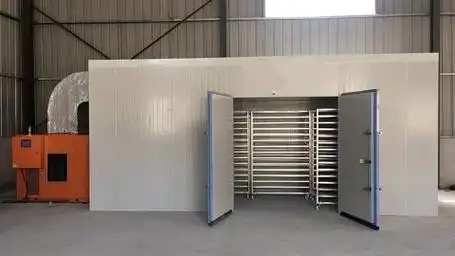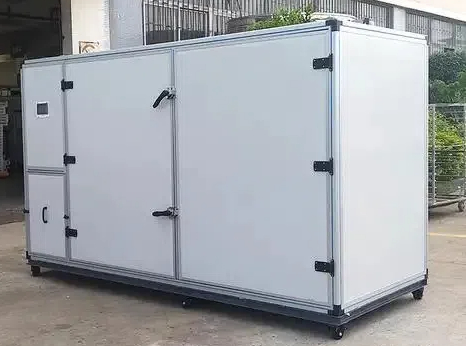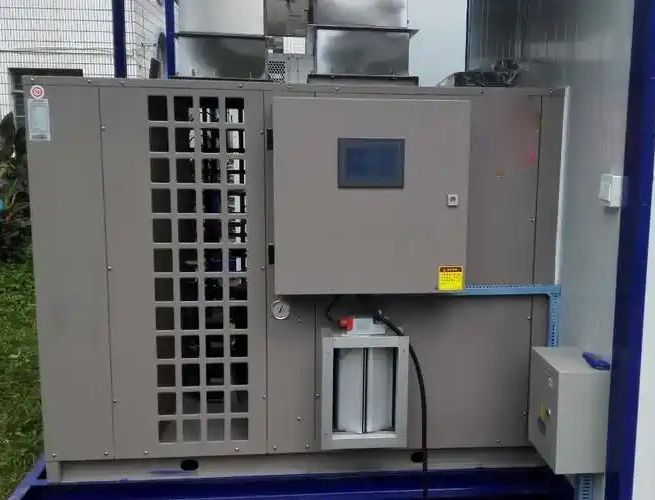
Content Menu
● Understanding Food Drying Technologies
>> Condenser Dryers
>> Heat Pump Dryers
● Comparing Energy Efficiency
● Operational Costs
● Applications in Food Processing
● Quality Considerations
● Environmental Impact
● Maintenance Considerations
● Conclusion
● FAQ
>> 1. What is the main difference between a condenser dryer and a heat pump dryer?
>> 2. Which dryer is more energy-efficient?
>> 3. Can both types of dryers be used for all food items?
>> 4. What are the typical costs associated with each type of dryer?
>> 5. How do I choose between a condenser dryer and a heat pump dryer?
Food drying is an essential process in food preservation, enhancing flavor, and extending shelf life. As a manufacturer of food drying machines, understanding the nuances between different drying technologies can significantly impact your product offerings and customer satisfaction. This article will explore the differences between condenser dryers and heat pump dryers, focusing on energy efficiency, operational costs, and overall performance.

Understanding Food Drying Technologies
Food drying machines can be categorized into various types based on their operational principles. The two most common types are condenser dryers and heat pump dryers.
Condenser Dryers
Condenser dryers operate by heating air using a conventional heating element. The warm air is circulated through the wet food items, absorbing moisture. The moisture-laden air then passes through a heat exchanger where it cools down, causing the moisture to condense and be collected in a container. This process typically operates at higher temperatures, which can lead to faster drying times but may also affect the quality of the dried product.
Advantages of Condenser Dryers:
- Faster Drying Times: Due to higher operational temperatures, condenser dryers can dry food items more quickly.
- Lower Initial Cost: Generally, these machines are less expensive to purchase compared to heat pump models.
- Simplicity of Design: The straightforward design of condenser dryers makes them easier to maintain and repair.
Disadvantages of Condenser Dryers:
- Higher Energy Consumption: They consume more energy per load compared to heat pump dryers.
- Potential Quality Loss: The high temperatures can degrade the quality of sensitive food items.
- Increased Heat Output: The operation generates more heat in the surrounding environment, which may not be ideal for all settings.
Heat Pump Dryers
Heat pump dryers utilize a closed-loop system that recycles air. They operate similarly to reverse-cycle air conditioners. In this system, low-temperature heat is extracted from the surrounding air and converted into high-temperature heat used for drying. The moisture is then removed from the air without significant temperature increases.
Advantages of Heat Pump Dryers:
- Energy Efficiency: Heat pump dryers use significantly less energy than condenser dryers—about half as much per load.
- Gentler on Food Products: Operating at lower temperatures helps maintain the integrity and nutritional content of food items.
- Environmentally Friendly: Reduced energy consumption means a smaller carbon footprint, making them a more sustainable option.
Disadvantages of Heat Pump Dryers:
- Longer Drying Times: While they are more energy-efficient, they take longer to dry food compared to condenser dryers.
- Higher Initial Cost: The upfront investment for heat pump technology is generally higher.

Comparing Energy Efficiency
When considering energy efficiency, heat pump dryers have a clear advantage over condenser dryers.
| Feature | Condenser Dryer | Heat Pump Dryer |
| Energy Consumption | Higher per load | Lower per load |
| Typical Energy Rating | B or C | A+++ |
| Average Cost Per Load | Higher | Lower |
| Drying Temperature | 70-75°C | 50°C |
Heat pump dryers can save approximately 50% on energy consumption compared to condenser models due to their ability to recycle heat rather than generating new heat for each cycle. This efficiency translates into lower operational costs over time, making them a more economical choice for businesses focused on sustainability and reducing overhead costs.
Operational Costs
The operational costs associated with each type of dryer can significantly influence purchasing decisions for businesses in the food processing industry.
- Condenser Dryer Costs: Typically cost around $1.09 per load based on an average energy consumption of 173 kWh.
- Heat Pump Dryer Costs: Average around $0.54 per load with an energy consumption of about 87 kWh.
Over a year, using a condenser dryer could cost approximately $57 if used weekly, while a heat pump dryer would cost about $28 under similar usage conditions. This difference highlights the long-term savings potential when investing in heat pump technology.
Applications in Food Processing
Both types of dryers find applications across various food processing sectors:
- Condenser Dryers: Often utilized for products that require quick drying times and where cost is a primary concern. Common applications include:
- Dried fruits like apricots and raisins.
- Vegetables such as carrots and peas.
- Herbs that need rapid drying to preserve flavor.
- Heat Pump Dryers: Ideal for sensitive items like fruits and vegetables that benefit from gentler drying methods that preserve flavor and nutrients. Typical uses include:
- High-value products like berries and mushrooms.
- Organic products where quality retention is crucial.
- Snacks that require precise moisture content for optimal texture.
Quality Considerations
Quality retention is paramount in food processing. High-quality dried foods not only taste better but also retain more nutrients compared to lower-quality alternatives.
- Nutritional Retention: Heat pump dryers operate at lower temperatures, which helps preserve vitamins and minerals that could be lost during high-temperature drying processes typical in condenser dryers. For instance, vitamin C is particularly sensitive to heat; thus, using a heat pump dryer can help retain this vital nutrient in dried fruits.
- Flavor Preservation: The gentler drying process used by heat pump technology ensures that the natural flavors of food items remain intact. This aspect is crucial for products aimed at health-conscious consumers who prioritize both taste and nutrition.
Environmental Impact
As businesses become increasingly aware of their environmental footprint, choosing energy-efficient equipment has become essential.
- Carbon Footprint Reduction: Heat pump dryers contribute significantly less CO2 emissions due to their lower energy consumption compared to traditional condenser models. This reduction aligns with global efforts toward sustainability and environmental responsibility.
- Regulatory Compliance: Many regions are implementing stricter regulations regarding energy use in manufacturing processes. Investing in heat pump technology not only prepares businesses for compliance but also enhances their marketability as eco-friendly producers.
Maintenance Considerations
Maintenance requirements differ between the two types of dryers:
- Condenser Dryers: Generally require regular cleaning of filters and condensate tanks but are simpler mechanically, leading to potentially lower maintenance costs over time.
- Heat Pump Dryers: While they may require more specialized maintenance due to their complex systems, routine checks on refrigerant levels and compressor functionality are essential for optimal performance.
Conclusion
In summary, while both condenser and heat pump dryers have their place in food drying applications, heat pump dryers offer superior energy efficiency and better product quality retention over time. Businesses aiming for sustainability and lower operational costs should consider investing in heat pump technology despite the higher initial investment.
The choice between these two technologies ultimately depends on specific business needs—whether prioritizing speed or efficiency—and understanding how each type impacts overall operational costs will guide manufacturers toward making informed decisions that align with both economic goals and environmental responsibilities.

FAQ
1. What is the main difference between a condenser dryer and a heat pump dryer?
The main difference lies in their operation; condenser dryers use higher temperatures for faster drying while heat pump dryers recycle air at lower temperatures for energy efficiency.
2. Which dryer is more energy-efficient?
Heat pump dryers are significantly more energy-efficient than condenser dryers, using about half the energy per load.
3. Can both types of dryers be used for all food items?
While both can dry various foods, heat pump dryers are better suited for sensitive items that require gentler handling.
4. What are the typical costs associated with each type of dryer?
Condenser dryers generally have higher operational costs due to increased energy consumption compared to heat pump dryers.
5. How do I choose between a condenser dryer and a heat pump dryer?
Consider your business's specific needs regarding drying speed, energy efficiency, initial investment costs, and the types of food products you will be processing.












